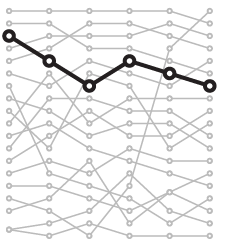Many surveillance apps cater to parents who want to keep tabs on their children who have mobile phones. Many of these apps are used for less parental purposes. Jennifer Valentino-DeVries for The New York Times reports:
More than 200 apps and services offer would-be stalkers a variety of capabilities, from basic location tracking to harvesting texts and even secretly recording video, according to a new academic study. More than two dozen services were promoted as surveillance tools for spying on romantic partners, according to the researchers and reporting by The New York Times. Most of the spying services required access to victims’ phones or knowledge of their passwords — both common in domestic relationships.












 Visualize This: The FlowingData Guide to Design, Visualization, and Statistics
Visualize This: The FlowingData Guide to Design, Visualization, and Statistics










